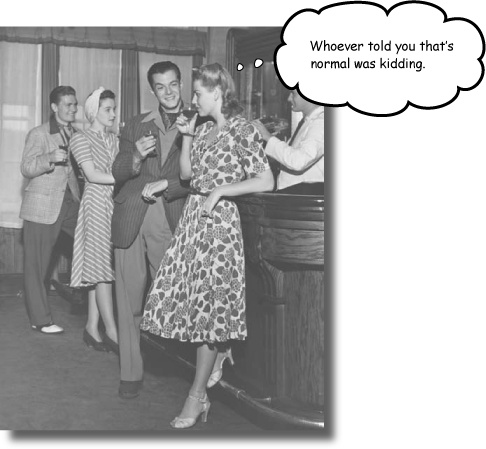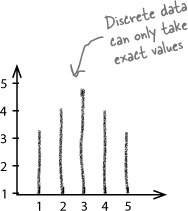Chapter 8. Using the Normal Distribution: Being Normal

Discrete probability distributions can’t handle every situation.
So far we’ve looked at probability distributions where we’ve been able to specify exact values, but this isn’t the case for every set of data. Some types of data just don’t fit the probability distributions we’ve encountered so far. In this chapter, we’ll take a look at how continuous probability distributions work, and introduce you to one of the most important probability distributions in town—the normal distribution.
Discrete data takes exact values...
So far we’ve looked at probability distributions where the data is discrete. By this we mean the data is composed of distinct numeric values, and we’re been able to calculate the probability of each of these values. As an example, when we looked at the probability distribution for the winnings on a slot machine, the possible amounts we could win on each game were very precise. We knew exactly what amounts of money we could win, and we knew we’d win one of them.

If data is discrete, it’s numeric and can take only exact values. It’s often data that can be counted in some way, such as the number of gumballs in a gumball machine, the number of questions answered correctly in a game show, or the number of breakdowns in a particular ...
Get Head First Statistics now with the O’Reilly learning platform.
O’Reilly members experience books, live events, courses curated by job role, and more from O’Reilly and nearly 200 top publishers.

